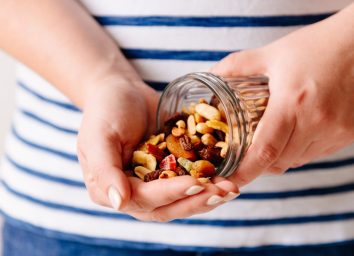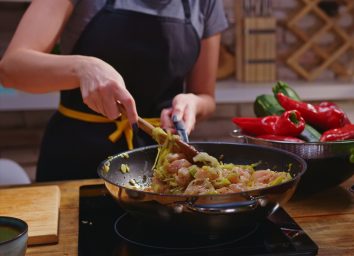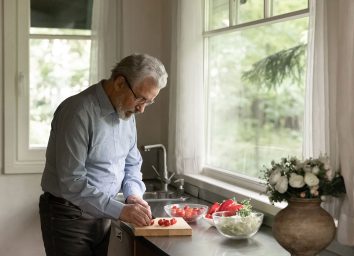Doing This Will Reduce Your Risk of Food Poisoning by Over 99%, Study Says
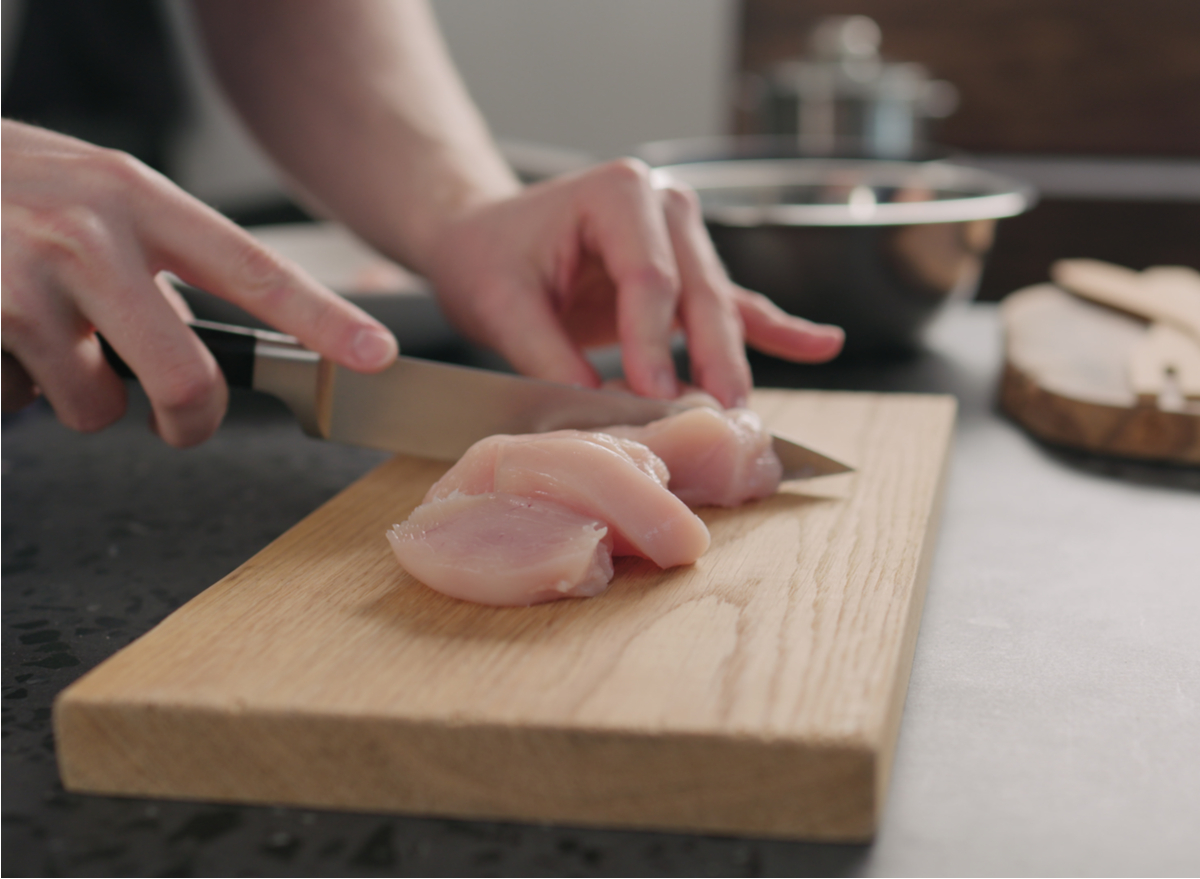
If you've ever had the misfortune of coming down with a serious case of food poisoning, you know first-hand why it's a fate many wouldn't wish on their worst enemy. It may be the punchline of countless bad jokes, but rest assured you won't be laughing if it happens to you.
Take Campylobacter, for example. Per the CDC, this bacterium is the number one most common bacterial cause of diarrheal illness in the United States. Technically a campylobacter infection is called campylobacteriosis, but most just know it as "food poisoning."
It's estimated that for every 100,000 U.S. citizens, 20 will be diagnosed with campylobacteriosis annually. Some figures even indicate over one and a half million Americans contract the bacterium each year. It's hard to settle on an exact estimate because many people don't seek medical care for food poisoning, opting to "tough it out" instead. In any case, there's no denying that campylobacteriosis is one of the most common food poisoning culprits in the United States.
Characterized by classic food poisoning symptoms like nausea, diarrhea, fever, and vomiting, the stomach flu caused by Campylobacter can last upwards of a week. Particularly bad cases often see patients lose significant body weight. It isn't a stretch to say that this infection may bring your life to a grinding halt.
In most cases, these infections begin when we eat or drink something contaminated with the bacterium. There are plenty of potential ways Campylobacter can sneak into our bodies, from unpasteurized milk to fruits or veggies that haven't been properly cleaned, but chicken is probably the biggest offender.
A 2015 study conducted by the National Antimicrobial Resistance Monitoring System (NARMS) found traces of Campylobacter on just under a quarter (24%) of examined retail raw chicken samples.
Cooking chicken until there is no pink left is a surefire way to kill Campylobacter, but all it takes is a single drop of raw chicken juice to facilitate infection. Considering recent research that found one in four people contaminate their food/kitchens while preparing raw chicken, it's no wonder why campylobacteriosis is so widespread.
Feeling queasy already? Don't worry, research published in the Journal of Applied Microbiology reports that doing this each time you prepare raw chicken will lower your risk of food poisoning by over 99%!
Wipe away food poisoning worries
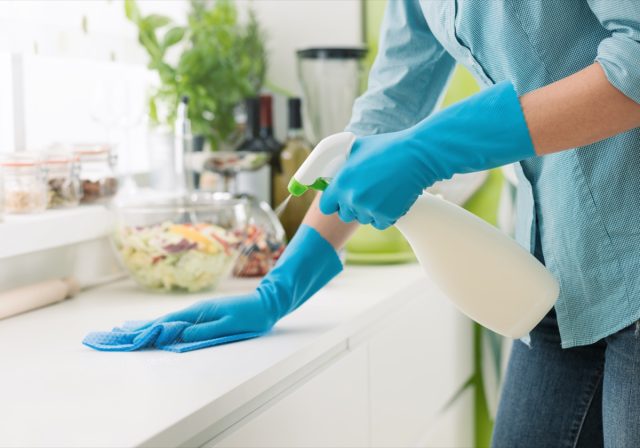
If you don't have any disinfectant wipes at home already, be sure to add them to your next grocery list.
Conducted at the University of Arizona, the study concludes using disinfectant wipes diligently after preparing raw poultry can reduce the risk of Campylobacter food poisoning by up to 99.2%.
"The scary thing about Campylobacter is that you really don't need to ingest that many bacteria to get a nasty illness, so we have to wipe clean our kitchen surfaces and wash our hands after preparing poultry," explains lead study author Dr. Gerardo Lopez.
To start, the team at UA tested the bacteria-killing efficiency of disinfectant antibacterial wipes on various countertop materials seen ubiquitously across the United States (granite, laminate, and ceramic tile).
Researchers then fed their initial experimental findings, in combination with earlier relevant data gained from previous studies, to a computer to calculate their ultimate conclusion: That using disinfectant wipes consistently and thoroughly after preparing raw chicken lowers the annual risk of a campylobacter infection by up to 99.2%.
Clean hands, even cleaner countertops
Importantly, it isn't enough to just wipe down your own hands after preparing raw chicken. Raw poultry has an incredible capacity to spread its bacteria in every conceivable direction. Each and every kitchen countertop, surface, or table that even conceivably could have made contact with the raw chicken should be wiped down as well.
"We found that it's not just the physical removal of bacteria by the wipe that helps—the antibacterial solution left behind on the counter surface continues to disinfect over the next few minutes," says Dr. Lopez.
It's vital to get to cleaning right away. If the bacteria has an opportunity to dry and really stick to the surface, it will be that much harder to clean.
"It's also important that consumers clean up with a wipe straight after preparing poultry. If drips and splatters from the meat remain, bacteria can transfer to other foods from dirty surfaces and utensils. If the area is allowed to dry, the bacteria can sometimes stick to the work surface making it even harder to get clean, later."
Dynamic food poisoning protection
Stocking up on disinfectant wipes will help protect you and the rest of your dinner guests from more than just Campylobacter. Researchers say there's no reason to think wipes won't also neutralize the risk of getting other food poisoning illnesses such as E. coli, noroviruses, or salmonella.
"We tested our hands after using the wipes to clean up—we wanted to see if there was a chance of directly ingesting bacteria from the preparation area via hand-to-mouth contact. Though they were very effective, it's still really important to wash your hands properly—any bacteria getting into your mouth could make you really ill," Dr. Lopez recommends.
Extra kitchen safety tips
Study authors add that it's a mistake to wash off raw chicken before cooking it. The impulse to clean raw chicken is understandable (it's pretty darn gross), but it's unnecessary and ultimately risky in terms of food poisoning.
All the harmful bacteria will be killed when the chicken is cooked anyway, and placing it under a faucet may cause Campylobacter to splash and spray all over the nearby sink, tap, and entire kitchen counter. In other words, if you wash off raw chicken before cooking it, it's advisable to also wipe down your entire sink area with disinfectant wipes.
Moreover, while many people tend to use a hand towel in their kitchen for multiple purposes, it's a good idea to just stick with disposable paper towels and disinfectant wipes when the recipe calls for raw chicken.
Separate cutting boards should also be used to prepare raw chicken. This will minimize the risk of spreading bacteria to other foods and ingredients considerably.

